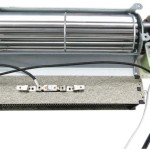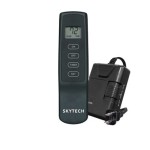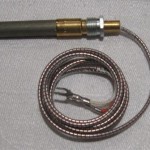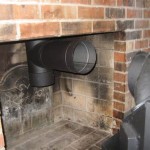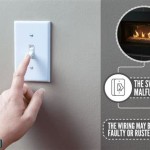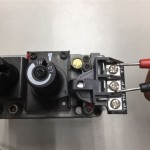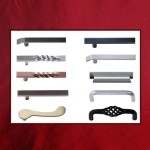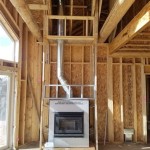Ventless Fireplace Logs: A Comprehensive Guide
Ventless fireplace logs, also known as vent-free fireplace logs, offer a convenient and aesthetically pleasing alternative to traditional wood-burning fireplaces. They provide the ambiance of a real fire without the need for a chimney or extensive venting system. This makes them a viable option for homes where installing a traditional fireplace is impractical or impossible. Understanding the technology, benefits, safety considerations, and maintenance requirements associated with ventless fireplace logs is crucial before making a purchase and integrating them into a living space.
These logs are designed to burn cleanly, producing minimal carbon monoxide and other harmful emissions within acceptable safety standards. The gas fuel, typically propane or natural gas, is combusted efficiently, resulting in heat output that can warm a room effectively. Choosing the appropriate type and size of ventless fireplace logs for a specific room size is an important factor in achieving optimal heating performance and avoiding potential overheating issues.
The market offers a wide array of ventless fireplace logs, varying in material, design, and heating capacity. Some are crafted from ceramic fiber, while others utilize refractory cement or a combination of materials. These materials are chosen for their ability to withstand high temperatures and provide a realistic appearance, mimicking the look of natural wood logs. The selection process should consider the aesthetic preferences of the homeowner and the functional requirements of the space.
Understanding Ventless Fireplace Log Technology
The core of ventless fireplace log technology lies in its efficient combustion process. Modern ventless log sets are engineered to burn fuel almost completely, minimizing the production of harmful byproducts such as carbon monoxide (CO). These systems rely on Oxygen Depletion Sensors (ODS) to monitor oxygen levels in the room. If the oxygen level drops to a predetermined point, the ODS automatically shuts off the gas supply, preventing the buildup of CO and ensuring safety.
The design of the burner system is also critical. It typically involves a specifically engineered burner pan and a series of strategically placed ports that distribute the gas evenly across the log set. This even distribution promotes complete combustion and reduces the likelihood of incomplete burning, which can lead to increased emissions. The logs themselves are often designed with intricate details to create a realistic flame pattern and enhance the visual appeal of the fireplace.
The fuel source, either propane or natural gas, significantly impacts the performance and installation requirements of ventless fireplace logs. Natural gas units are generally less expensive to operate due to the lower cost of natural gas compared to propane. However, a natural gas line must already be present or installed, which can add to the overall cost. Propane units offer greater flexibility in terms of placement, as they can be connected to a portable propane tank. This eliminates the need for a gas line installation, but requires regular refills of the propane tank.
Pilot lights are a common feature of ventless fireplace logs. The pilot light ignites the main burner when heat is desired. Modern units often include electronic ignition systems that eliminate the need for a continuously burning pilot light, saving energy and reducing standby fuel consumption. These electronic ignition systems typically use a spark to ignite the gas, providing a convenient and efficient way to start the fireplace.
Key Benefits of Ventless Fireplace Logs
One of the primary advantages of ventless fireplace logs is their ease of installation. Unlike traditional fireplaces, they do not require a chimney or flue. This significantly reduces installation costs and makes them suitable for a wider range of homes and apartments. They can often be installed directly into an existing fireplace opening or into a specially designed firebox, requiring only a gas line connection (for natural gas models) or a propane tank connection (for propane models).
Ventless fireplace logs offer a high degree of energy efficiency. Because they don't require a chimney, they don't lose heat through upward venting. This means that more of the heat generated by the fireplace is retained within the room, leading to lower heating bills and increased comfort. The efficiency rating of ventless fireplaces is often close to 99%, making them a highly efficient heating option for supplemental heat.
The aesthetic appeal of ventless fireplace logs is another significant benefit. They provide the ambiance of a real fire without the hassle of chopping wood, building a fire, and cleaning up ashes. Modern ventless log sets are designed to closely resemble natural wood logs, with realistic textures, coloring, and flame patterns. This allows homeowners to enjoy the beauty and warmth of a fire without the mess and inconvenience associated with traditional wood-burning fireplaces.
Ventless fireplaces offer convenient operation. Many models come with remote controls that allow users to adjust the flame height, heat output, and even set timers. This provides a level of control and convenience that is not possible with traditional wood-burning fireplaces. The ease of use makes them an attractive option for individuals who want to enjoy the ambiance of a fire without the effort required to maintain a wood-burning fireplace.
Safety Considerations and Proper Usage
While ventless fireplace logs are designed to be safe, it's essential to adhere to all safety guidelines and manufacturer instructions. Proper ventilation is crucial, even with ventless systems. While they don't require a traditional chimney, it's important to ensure that the room is adequately ventilated to prevent the buildup of carbon monoxide and other gases. Opening a window slightly or installing a carbon monoxide detector can provide an extra layer of safety.
Carbon monoxide detectors are an indispensable safety feature when using ventless fireplace logs. These detectors provide an early warning of any carbon monoxide buildup, allowing homeowners to take immediate action to ventilate the room and prevent potentially dangerous exposure. Regular testing and maintenance of carbon monoxide detectors are essential to ensure their proper functioning.
It's also imperative to choose the correct size of ventless fireplace logs for the room in which they will be used. Overly large units can produce excessive heat, leading to discomfort and potentially unsafe conditions. Manufacturer guidelines typically provide recommendations for the appropriate BTU (British Thermal Unit) output for different room sizes. Selecting a unit that is appropriately sized for the space will optimize heating performance and minimize the risk of overheating.
Regular maintenance is key to ensuring the safe and efficient operation of ventless fireplace logs. This includes cleaning the burner assembly, inspecting the gas connections, and checking the oxygen depletion sensor. Consult the manufacturer's instructions for specific maintenance recommendations. Professional servicing by a qualified technician is also advisable to ensure that the fireplace is functioning correctly and safely.
Never use ventless fireplace logs in enclosed spaces such as bedrooms or bathrooms. These spaces typically have limited ventilation, which can increase the risk of carbon monoxide buildup. Furthermore, it is not advisable to use ventless fireplaces as a primary heating source. They are designed for supplemental heating and should not be relied upon as the sole source of heat, especially during extended periods of cold weather. Understanding these limitations and using ventless fireplaces responsibly will contribute to a safe and enjoyable experience.

Napoleon Gvfl24 Ventless Gas Log Set 24 Inch

18 Evening Embers See Thru Ventless Gas Fireplace Logs

Real Fyre Chfr Charred Frontier Oak Ventless Gas Log Set Ansi Certified

Top 6 Ventless Gas Log Sets Woodlanddirect Com

Ponderosa Gas Logs Vent Free Burner

18 C1a Original Chillbuster Vent Frees Gas Log Set

Vented Vs Ventless Gas Logs Differences How To Choose

Monessen Ph Mon Mountain Cedar Vent Free Gas Log Set

Small Gas Logs Reduced Depth Vented And Ventless

Pleasant Hearth Wildwood 24 In Vent Free Dual Fuel Gas Fireplace Logs Vfl2 Ww24dt The Home Depot
Related Posts

